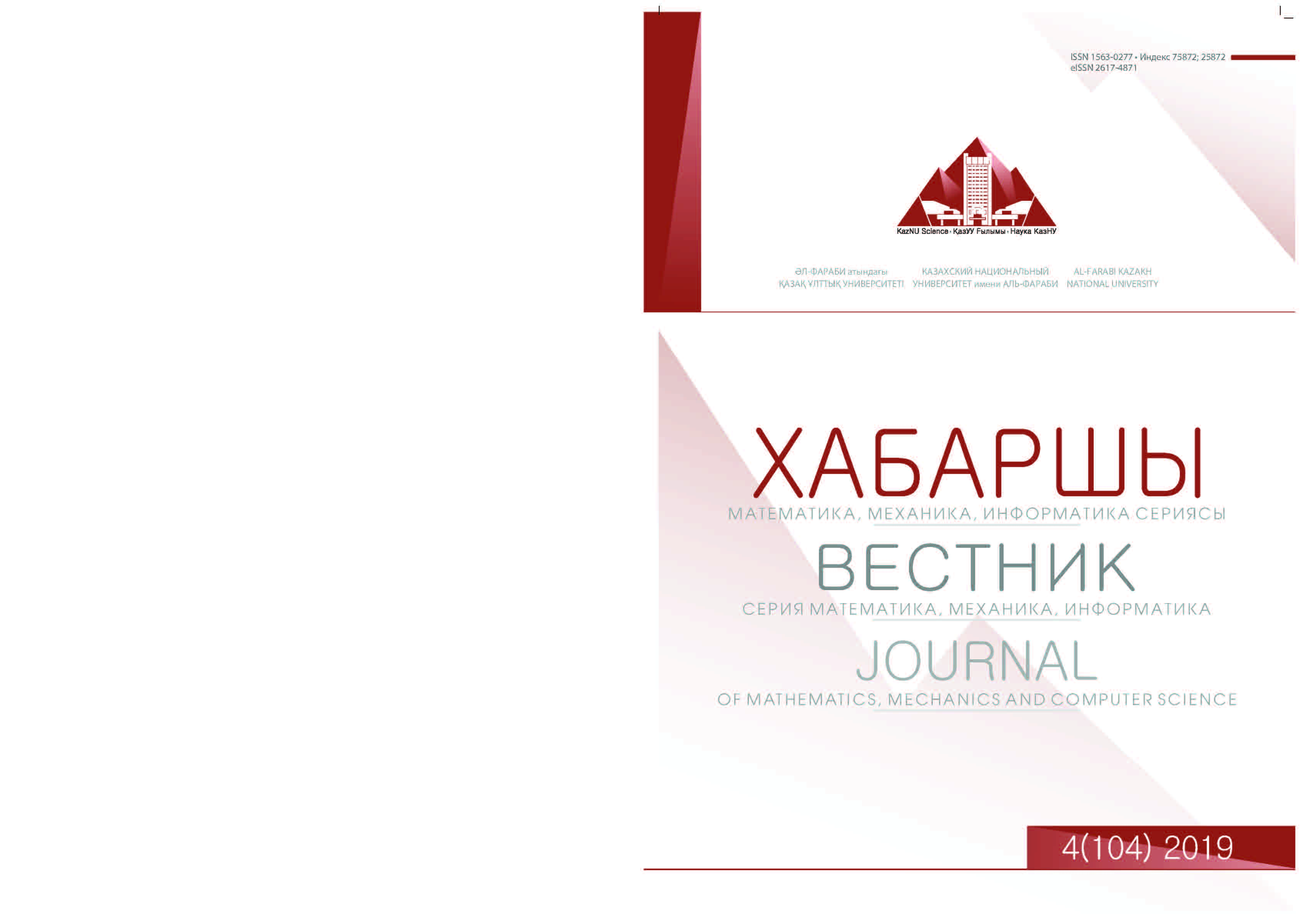Uniqueness of the restoration of boundary conditions differential operator on a set of spectra
DOI:
https://doi.org/10.26577/JMMCS-2019-4-m5Keywords:
Boundary conditions, correct narrowing, integral disturbanceAbstract
In this paper, we pose the inverse problem of reconstructing the boundary conditions of a fourthorder
differential operator on a finite interval from the set of spectra of four related operators.
The uniqueness theorem for the restoration of boundary functions from the set of spectra of four
related operators is proved. A fourth-order fixed linear differential expression is considered with
arbitrary intensely regular two-point boundary conditions. It is believed that complete information
about eigenvalues and eigenfunctions is known about this operator. Then we alternately perturb
the boundary conditions. First, an integral perturbation is added only to the first boundary condition.
Then we perturb the first and second boundary conditions with integral terms. Thus, four
related boundary value problems are constructed. The inverse problem is to reconstruct the added
integral perturbations of the boundary conditions from the four spectra of related boundary value
problems. The uniqueness of the restoration of integral perturbations is proved. Note that integral
perturbations may contain derivatives of solutions. However, the order of the derivative is subject
to natural restrictions. In the case of multipoint boundary value problems, the results are greatly
simplified.
References
of a differential equation by its spectral function]" , Izv. AN SSSR. Ser. matem. 15:4 (1951): 309–360.
[2] Levitan B.M., Gasyimov M.G., "Opredelenie differentsialnogo uravneniya po dvum spektram [Determination of a differential
equation by two spectra]" , UMN 19:2 (116) (1964): 3–63.
[3] Leybenzon Z.L., "Obratnaya zadacha spektralnogo analiza obyiknovennyih differentsialnyih operatorov vyisshih poryadkov
[The inverse problem of spectral analysis of ordinary differential operators of higher orders]" , Tr. MMO 15 (1966): 70–144
[4] Yurko V.A., "Vosstanovlenie differentsialnyih operatorov vyisshih poryadkov [Recovering differential operators of higher
orders]" , Differents. uravneniya 25:9 (1989): 1540–1550.
[5] Sadovnichiy V.A., "Edinstvennost resheniya obratnoy zadachi v sluchae uravneniya vtorogo poryadka s neraspadayuschimisya
kraevyimi usloviyami. Regulyarizovannyie summyi chasti sobstvennyih chisel. Faktorizatsiya harakteristicheskogo
opredelitelya [The uniqueness of the solution of the inverse problem in the case of a second-order equation with
non-decaying boundary conditions. The regularized sums of a part of the eigenvalues. Factorization of the characteristic
determinant]" , Dokl. AN SSSR 206:2 (1972): 293–296
[6] Kanguzhin B.E, Dairbaeva G., Madibayulyi Zh., "Identifikatsiya granichnyih usloviy differentsialnogo operatora [Identification
of boundary conditions of a differential operator]" , Vestnik KazNU, seriya matematika No 3 (103) (2019):
13-18
[7] Mikhailov V.P., "O bazisah Rissa v L2(0; 1) [On the basis of Riesz in L2(0; 1)] , Docl. USSR Academy of Sciences 144,
No 5 (1962): 981-984.
[8] Keselman G.M., "O bezuslovnoj shodimosti razlozhenij po sobstvennym funkciyam nekotoryh differencialnyh operatorov
[On the unconditional convergence of eigenfunction expansions of some differential equations operators]" , Iz. VUZ USSR.
Mathematics No 2 (1964): 82-93.
[9] Shkalikov A.A., "O bazisnosti sobstvennyh funkcij obyknovennyh differencialnyh operatorov s integralnymi kraevymi
usloviyami [On the basis of eigenfunctions of ordinary differential operators with integral boundary conditions]" , Westn.
Moscow State University. Ser. Math. Mech. No 6 (1982): 12-21.
[10] Naymark M.A., Lineinye differentsial’nye operatory (M.: Nauka, 1969).




